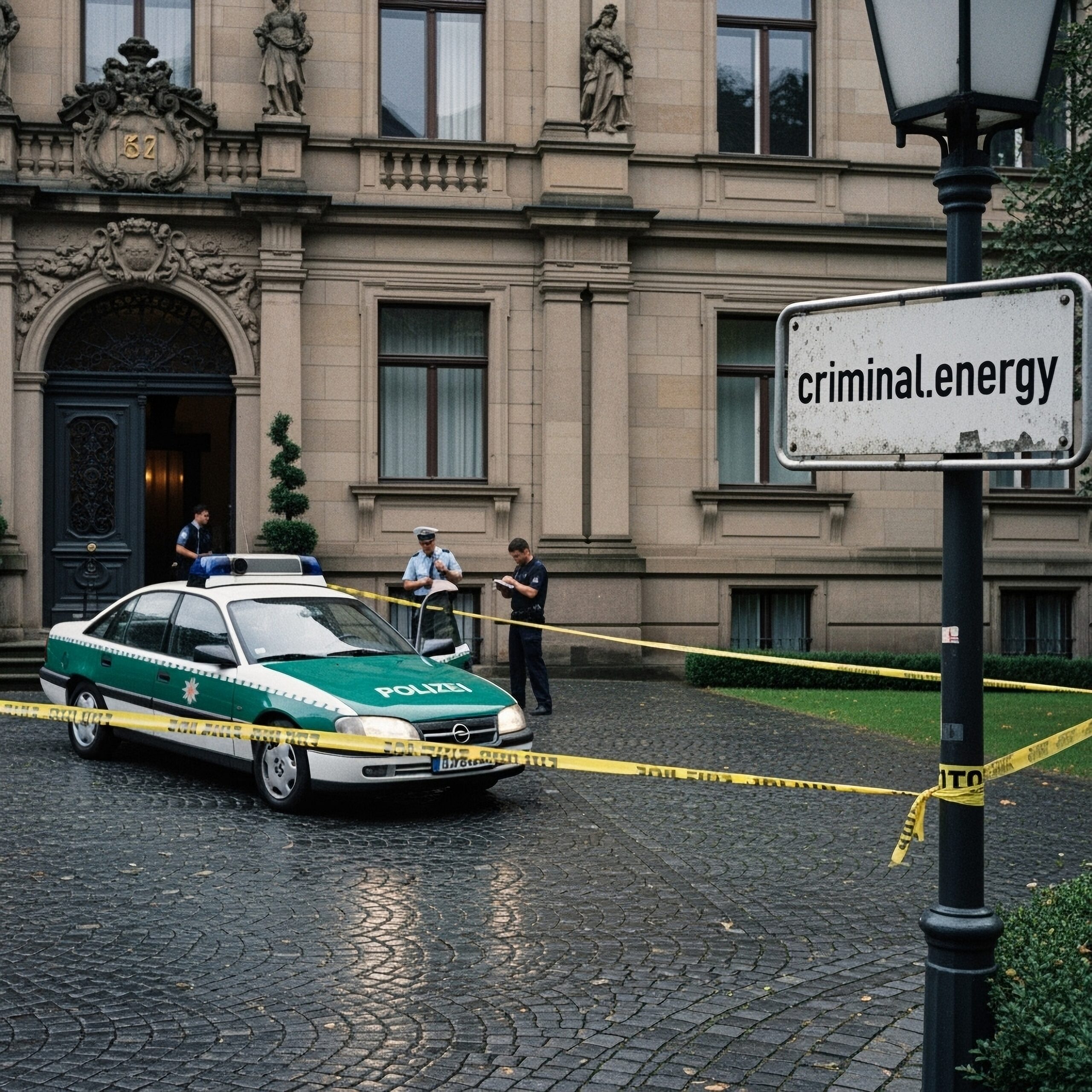In the financial metropolis of Frankfurt am Main, a sixfold murder more than 25 years ago in the upscale Westend district, one of the most expensive residential areas in Germany, caused a great stir and remains one of the most brutal murder cases in Frankfurt’s criminal history. On August 15, 1994, police officers found six bodies in a listed villa at Kettenhofweg 124a, all of which had been strangled with an electrical cable. The multi-story neo-baroque villa belonged to Gabor and Ingrid Bartos, a married couple who ran a high-class brothel there. The 55-year-old Gabor Bartos was a dubious businessman who traded in anything that made money, including young women, whom he flew to Frankfurt from Egelsbach in his single-engine Piper Arrow from the CIS states, Hungary, and Estonia. The high-class prostitutes always traveled on tourist visas. When these expired, Gabor Bartos replaced them with new girls. His 48-year-old wife Ingrid, the heiress to a well-known Frankfurt stationery store, managed the brothel and, upon request, issued fictitious brothel invoices as receipts for stationery to wealthy clients from the worlds of politics, law, and business. An hour in the high-class brothel cost 350 marks. The clientele was hand-picked and only admitted on the recommendation of existing customers. The police found both the couple and four prostitutes dead in the villa, which had been called by Ingrid Bartos’ mother, who also ran the brothel. Neighbors had notified her because the poodle was barking incessantly and the shutters of the house were still down even though it was already morning. The six bodies had all been bizarrely staged. Gabor Bartos, who had been strangled from behind in the sauna, lay in the basement, and the naked body of his wife lay in the next room. In the boiler room, the police found 25-year-old Marina Erokina gagged, her kimono torn and a cloth over her face. On the first floor lay 18-year-old Veronika Sorokina and 28-year-old Jelena Starikowa. Both lower bodies were undressed and covered with a down blanket. On the second floor lay 27-year-old Olga Lucina, her lower body covered with a towel and brutally gagged with a blouse. The four dead high-class prostitutes had only been in Frankfurt for a few days. Their 19-year-old colleague Natalja Koslowa was lucky, as she had spent the weekend in Strasbourg with Frankfurt trade fair boss Eike Markau. This pleasure trip meant that Eike Markau was not only the talk of the town, but also ruined his good reputation. Three years after the brothel murders, he resigned as trade fair director. Twenty-five-year-old Sofia Berwald was also spared, but for a different reason. Initially, the police assumed that the Russian mafia was behind the murders. But soon Eugen Berwald, the husband of Sofia Berwald, who worked as a prostitute in the brothel, came under the investigators’ scrutiny. His wife Sofia was the daughter of a German engineer and a Kazakh mother who had married former soldier Yevgeny Balakin from Moldova. After the wedding, he received German citizenship and took her name. The couple was officially registered at the immigrant housing center in Rettenbach in East Allgäu. Her husband drove a Fiat Uno, which had often been seen by undercover police officers investigating Bartos for forced prostitution. During a search of the couple’s apartment, a garbage bag was found next to an electrical cable, similar to the one found on Kettenhofweg, containing jewelry, other valuables, and 20,000 marks. Gabor Bartos’ Rolex was found on Eugen Berwald’s wrist. The couple was arrested, and at the end of January 1996, one of the largest murder trials in the Federal Republic of Germany began before the 22nd Grand Criminal Chamber of the Frankfurt Regional Court. Sofia and her husband had planned a robbery together. Sofia, who had drawn up a map for Eugen, gained him access to the villa while Gabor was out on his usual afternoon walk with his poodle. Inside the house, he stole everything he could get his hands on. But on that particular Sunday, Gabor returned from his dog walk earlier than usual and caught Eugen in the act. The 1.80-meter-tall man with military combat training strangled him with an electrical cable. Then he killed the others so that there would be no witnesses. Eugen Berwald vehemently denied the sequence of events and claimed that the Russian mafia, led by a man named Alexander, was responsible for the murders. He himself had only acted as an accomplice. Throughout the trial, both the lawyers and the couple wanted to pin the murders on the Russian mafia. But it was a pair of cycling shorts that refuted this claim. The cycling shorts had holes that looked like eye slits, which Eugen Berwald had pulled over his head during the crime so that no one would recognize him. The shorts had traces of Eugen Berwald’s saliva on them. In addition, traces of fibers from these shorts were found on all of the bodies. Eugen Berwald was sentenced to life imprisonment with particular severity of guilt for six counts of murder and robbery. His wife Sofia received a six-year prison sentence for joint aggravated robbery, which she served in Preungesheim Prison. Eugen Berwald divorced shortly after the verdict, which resulted in him losing his German citizenship. This marked the end of one of Germany’s most spectacular sixfold murders, in which a man took six lives with the help of an electric cable.
By Isabella Mueller
Welcome to my journey through creativity and discovery! My name is Isabella Mueller, and I invite you to explore the fascinating creative universes I create through my blogs. Since 2020, I have been dedicating my passion to telling captivating stories that are mysterious, historical, and emotional. My goal is not only to entertain, but also to inspire reflection and awaken the spirit of discovery in each of us. At isabellas.blog, the suspense of crime stories is combined with exciting travel tips. Imagine wandering through the picturesque streets of a new city, uncovering dark secrets hidden in the shadows of its history. Every piece on my blog is designed to make the heart of every crime fiction fan beat faster while sparking curiosity about unknown places. Here, you are invited to experience the thrill of the unknown and the beauty of our world—a perfect combination for all adventure seekers! My second blog, akteq.com, is all about true, unsolved crime stories. Under the motto “akteQ: Cold Case Stories,” I reveal the eerie and often tragic stories behind unsolved cases. Together, we can explore the mysteries of the past and delve deep into the human psyche. What really happened? Who were the people behind these mysterious events? In this blog, I invite you to ask questions and find the answers that often remain hidden in the dark. You can find another exciting chapter in my blogging career at thecastles.org. Here, I embark on an enchanting journey through the history of castles and palaces. Pause for a moment as you discover the stories hidden within the walls of these ancient structures. “Explore the enchantment, discover the history – your journey begins at thecastles.org!” These words are more than just a slogan; they are an invitation to anyone who wants to combine history and magic. Be inspired by the impressive stories and the fascination of bygone eras! But that's not all! At kripo.org, you'll find a comprehensive online magazine for real criminal cases. Immerse yourself in the world of crime, learn about the real stories behind the headlines and the people who are involved in solving them. With criminal.energy, I take you on a journey through the gripping stories of true crimes in which villains are hunted, caught, and convicted. The search for justice and the confrontation with the unknown are at the center of it all. TrueCrime Blog 187.news takes you into the depths of crime. And for those who want to travel the world, wanderlust.plus offers the opportunity to explore the world, one adventure at a time. It's all about the love of exploration and the joy of discovering new cultures and landscapes. Finally, truecrime.ch invites you to discover the dark side of Switzerland and Europe: true crimes, true stories. Let's discover together the stories that shape the world around us. I look forward to accompanying you on this exciting journey and hope you will share many unforgettable moments with me!

